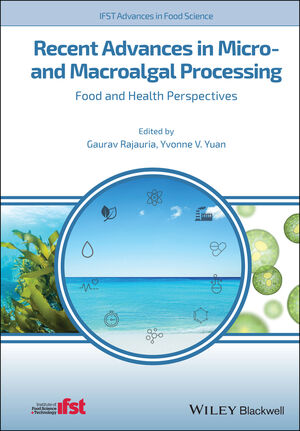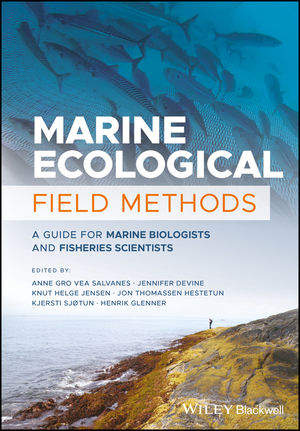
Uncategorized
Marketing
Wisconsin ready to embrace walleye raised in aquaponics, new survey says
Consumer attitudes in Wisconsin toward walleye and lettuce grown in aquaponic systems
March 27, 2025 By Mark H. Schmitz and Timothy P. Macafee, Concordia University Wisconsin
 After providing readers with a clear definition of aquaponics, nearly 45% of respondents were interested in learning more about aquaponics. (Photo: iStock / Getty Images Plus)
After providing readers with a clear definition of aquaponics, nearly 45% of respondents were interested in learning more about aquaponics. (Photo: iStock / Getty Images Plus) Home to the world’s largest aquaponic producer, Superior Fresh, and at least 60 other similar farms, Wisconsin is seen as a national leader in the growing field of aquaponic food production. How has this strong presence in the industry resonated with consumers?
We surveyed Wisconsin residents to better understand how this emerging industry has shaped consumer preferences and buying habits associated with products raised in aquaponic systems. Our results documented both positive perceptions about these products and most importantly a willingness to pay more for them.
Dynata administered an online survey for Concordia University Wisconsin from Dec. 1 to Dec. 6, 2021. To ensure the survey sample was representative of the general Wisconsin population, we asked Dynata to recruit respondents in a quota for their education level and geographic location in the state. The final sample size consisted of 545 people.
Respondents were first asked to describe “how knowledgeable would you say you are about aquaponics.” Despite Wisconsin’s role as a national leader in aquaponics, our data suggest Wisconsinites are still largely unfamiliar with the industry. Almost 70 percent of respondents reported not being knowledgeable about aquaponics. After providing readers with a clear definition of aquaponics, nearly 45 percent of respondents were interested in learning more about aquaponics.
One way to understand consumers’ attitudes about food is to ask about “local” options. Finding out how many respondents cared about where their food was grown is an attitude that will help explain their feelings towards aquaponics. Our survey found 50 percent of respondents preferred to eat food from a local producer if possible. Our survey also found 35 percent are likely to eat farm-raised fish and 50 percent believed these fish are healthy to eat.
The next set of survey questions provided additional insight into consumers’ attitudes towards food fish raised in aquaponic systems. Perceptions about the industry and products are important indicators of purchasing behavior, and our study found positive attitudes towards aquaponics. Adapting questions from Short et al. 2017, our survey listed several specific attitudes about the fish used during the aquaponic growing process. More than half of respondents believed the following positive perceptions about aquaponics:
- It is a safe and clean method for growing fish (59 percent)
- Impacts the environment positively (63 percent)
- Grows high nutritional value products (56 percent)
- Is a humane way to raise fish (59 percent)
Walleye are an important component of the cultural tradition of Friday night fish frys in Wisconsin and have gained popularity for its table fare throughout North America. Walleye is one of the top six emerging aquaculture species (NCRAC Technical Bulletin #125).
One key takeaway from our survey results is that a sizeable portion of the Wisconsin population are conscious about from where their food comes from and are open to eating fish grown in aquaponic systems. Consumers were more likely to eat walleye (39 percent) compared to tilapia (36 percent). Almost half (45 percent) were interested in learning more about farm-raised walleye in Wisconsin.
In relation to purchasing attitudes and behavior we wanted to know two things: what would influence someone to buy aquaponically-grown fish, and how much more would someone pay for an aquaponically-grown head of lettuce. Regarding influencing buying behavior on fish, the results showed people would “likely” consider the following influence:
- Safety or cleanliness concerns (67 percent)
- Flavor concerns (63 percent)
- Price (58 percent)
- Nutrition concerns (56 percent)
- How fish are raised (47 percent)
To understand how much more respondents would pay for aquaponically-grown lettuce, we asked two questions. One question addressed the percent more they would pay, and the second was the amount more respondents were willing to pay over traditionally grown lettuce. The results showed the following:
- 33 percent = no more
- 42 percent = less than 10 percent more
- 20 percent = 10 to 25 percent more
- 5 percent = more than 25 percent more

(Image: Concordia University Wisconsin)
These results show that a majority of Wisconsin consumers are willing to pay a premium for aquaponically-grown lettuce. Two-thirds of respondents indicated they are willing to pay more by percentage for aquaponic lettuce and 70 percent of respondents indicated they are willing to pay between US$0.50 to over $2.00 more for lettuce grown in an aquaponics system.
The combination of relatively little knowledge but positive perceptions about aquaponics presents marketers and growers a golden opportunity to reinforce the industry’s positive qualities. Our results also show persuasion is needed to change the buying habits of Wisconsin consumers to increase demand of aquaponic products.
The overall conclusion from this data is a strong market exists for aquaponically-grown food in Wisconsin. A majority agreed that aquaponic systems have a positive impact on the environment and over two thirds of respondents are willing to pay a premium for aquaponic lettuce. Our data indicates that enhanced consumer education has high potential to further boost this market demand. Wisconsinites appear to be ready to embrace walleye raised locally and sustainably in aquaponic systems.
Dr. Mark H. Schmitz
 Dr. Tim Macafee is the chair of the Department of Communication at Concordia University Wisconsin-Ann Arbor. He specializes in audience engagement research for business insights, focusing on the impact of digital technology on user engagement.
Dr. Tim Macafee is the chair of the Department of Communication at Concordia University Wisconsin-Ann Arbor. He specializes in audience engagement research for business insights, focusing on the impact of digital technology on user engagement.
Print this page





